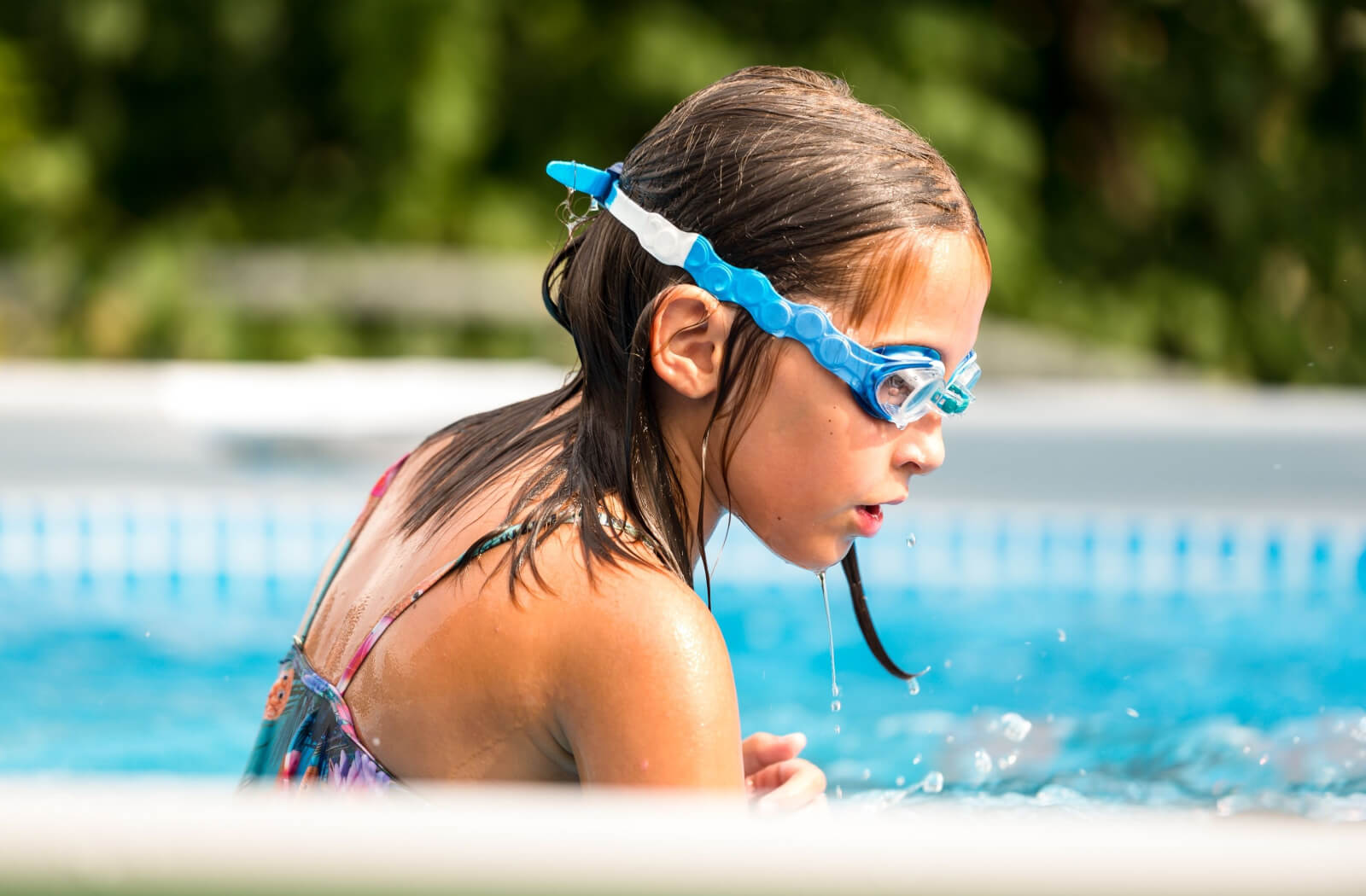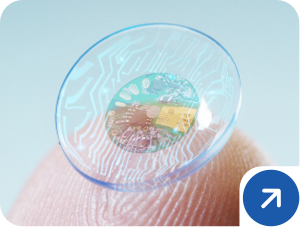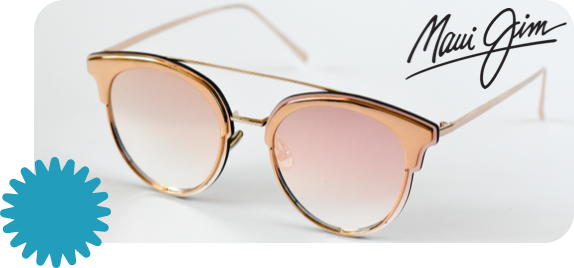Contact lenses offer versatile vision correction and are especially beneficial for people who lead an active life. They’re great for activities like going for a jog or an intense session of hot yoga, but what about swimming?
Both the American Optometric Association (AOA) and the U.S. Federal Food and Drug Administration (FDA) advise against wearing contact lenses while swimming. While it might seem tempting to jump in the water with your contact lenses in, the risk of a serious eye infection is simply not worth it. Swimming areas like pools, lakes, and the ocean can be home to micro-organisms, which can become trapped in your contact lenses and cause harm to your eye health.
There are safer vision solutions for swimming. Specialty eyewear, including prescription swimming goggles, can provide both vision correction and protection to ensure a safe and crystal-clear swimming experience.
Consult with your eye doctor about your specific eye care needs. Your eye care team is an excellent resource for info on properly wearing and caring for your contact lenses to support your healthy vision.

The Risks of Swimming with Contact Lenses
As a contact lens wearer, you should avoid exposing your contact lenses to any water. This even includes activities like showering or using a hot tub. However, swimming can pose a particularly high risk due to how long you may spend in the water. The following symptoms may occur if you swim with contact lenses on:
- Eye irritation: The water in swimming pools, hot tubs, lakes, and oceans may contain harmful chemicals, bacteria, or other contaminants that can cause your eyes to become irritated or inflamed.
- Eye infection: Bacteria can cling to your contact lenses and cause infections, including Acanthamoeba keratitis.
- Corneal abrasions: Exposure to water can cause your contact lenses to swell or even change shape and stick to the surface of your eye. This can cause discomfort and even scratch the cornea (the clear, dome-shaped outermost layer of the front of the eye).
- Dry eyes: Chlorine or saltwater in swimming pools or oceans can cause your eyes to become dry and irritated.
Acanthamoeba Keratitis
Acanthamoeba keratitis is a rare but serious type of eye infection that can cause permanent vision loss and even blindness. The infection is caused by a tiny, single-cell amoeba called Acanthamoeba. Acanthamoeba keratitis occurs when these amoebas infect the cornea.
According to the Centers for Disease Control and Prevention (CDC), Acanthamoeba is commonly found in bodies of water, including lakes and oceans.
The symptoms of Acanthamoeba keratitis include:
- Foreign object sensation in your eye
- Eye pain and redness
- Blurred vision
- Sensitivity to light
- Watery eyes
If you experience any of the above symptoms after swimming, it’s important to remove your contact lenses and contact your eye doctor immediately. If left untreated, Acanthamoeba Keratitis can cause permanent vision loss and even blindness. While this type of infection is uncommon, proper contact lens wear and care—especially around water—can help you lower your risk.
How to Safely Swim with Contact Lenses
If you find yourself in a situation where you cannot avoid wearing contact lenses while swimming, there are a few steps that you can take to lower your risk of swimming-related eye problems.
Wear Swimming Goggles
A pair of well-fitting swimming goggles can help keep water away from your contact lenses while swimming. Wearing goggles is a great idea for anyone planning a swim, not just contact lens wearers. At West Coast Optical, we also sell prescription goggles fit for both kids and adults in a variety of color and lens options. Tight-fighting goggles can protect your eyes from common irritants like chlorine and saltwater, and some swimming goggles even provide UV protection for your day out on the beach.
Use Single-Use Contact Lenses
Single-use, or daily disposable, contact lenses are designed to only be worn once. While they are still not recommended for swimming, single-use lenses can help to lower your risk of eye infection as they can be disposed of immediately after use. Once your lenses have been exposed to water, you will need to remove and dispose of them as soon as possible and put in a new set of lenses.
Proper Contact Lens Care
Proper contact lens wear and care are vital steps in maintaining healthy vision. After swimming in your contact lenses, it’s especially important to safely remove your lenses and appropriately disinfect them.
Exposure to water can cause your contact lenses to stick to your eye, which in turn can scratch your cornea. To avoid corneal abrasions, you can use lubricating eye drops to help loosen the contact lens prior to removing it. After applying the drops, remove your lenses with clean, dry hands.
You should remove your contacts as soon as possible if they have been exposed to water. For contact lenses that are not single-use, remove your lenses and disinfect them before wearing them again.
While taking these steps may help reduce your risk of an eye infection, the safest option is to remove your contact lenses before entering the water.
Alternatives for Clear Vision While Swimming
With warmer weather just around the corner, you may already be planning summer trips to the beach. Before you hit the water with your contact lenses in, keep in mind the risks. Talk to your eye doctor about safer alternatives to contact lenses, like prescription swimming goggles or prescription sunglasses.
The team at West Coast Optical is here for all of your vision care needs, including vision solutions for swimming. Book your appointment to find out how you can safely see clearly the next time you go for a swim.















